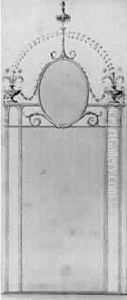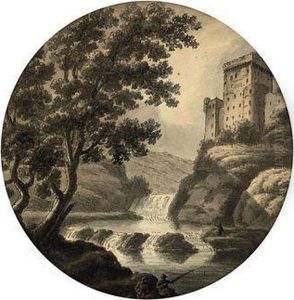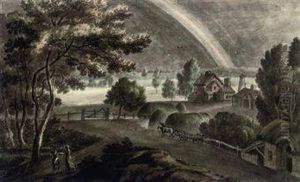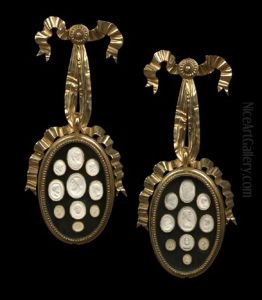Robert Adam Paintings
Robert Adam was a Scottish neoclassical architect, interior designer, and furniture designer who became one of the most celebrated architects of his time. Born on July 3, 1728, in Kirkcaldy, Fife, Scotland, Adam was the son of William Adam, one of Scotland's foremost architects at the time. He received a comprehensive education in Edinburgh before embarking on a Grand Tour of Europe in 1754, which greatly influenced his architectural style.
During his time in Europe, Adam was particularly inspired by the classical architecture of ancient Rome and the Renaissance, and he studied under the French architect Charles-Louis Clérisseau, who helped him develop his distinctive style. After returning to England in 1758, he established a partnership with his brother James and they started a practice in London.
Adam's work spanned numerous public and private buildings, and he is best known for his development of the 'Adam Style', which is characterized by a synthesis of classical motifs with a new level of refinement and elegance. His designs often included detailed decorations, both in the structural elements of the buildings and in the interior design. Notable works include the neoclassical facades of Syon House and the interior design of Osterley Park.
Adam's influence extended beyond architecture to furniture design and decorative arts, creating a comprehensive aesthetic experience in his interiors. His work was widely celebrated, and he was appointed the Architect of the King's Works in 1761. Despite his success, later in his career, his popularity waned with the rise of new architectural trends. Robert Adam passed away on March 3, 1792, in London, leaving behind a legacy that greatly impacted British architecture and design.


























